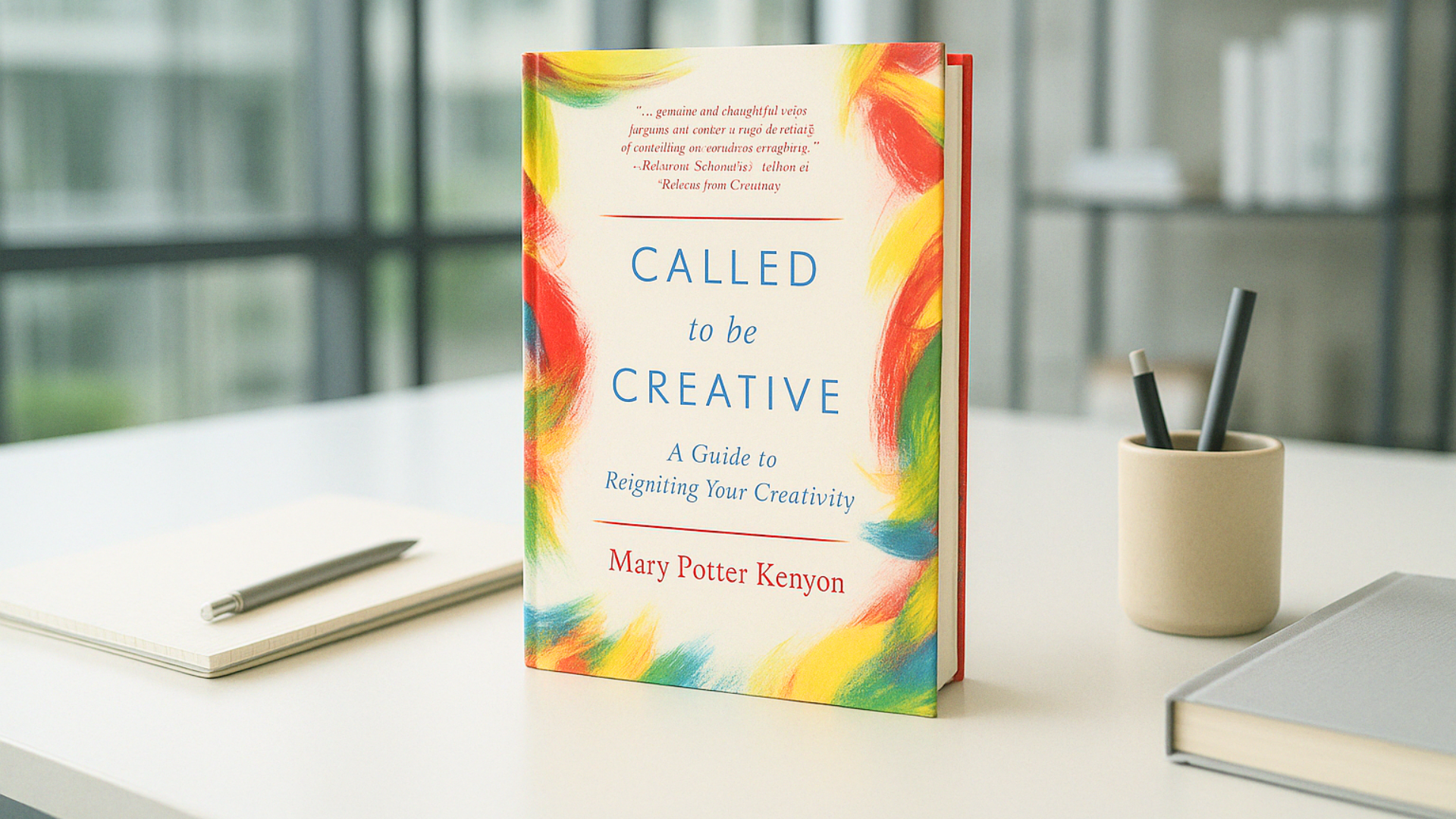Why It’s Never Too Late to Begin Creating Again

Book Review: Called to Be Creative by Mary Potter Kenyon
A gentle invitation to rediscover the creative spark that never truly left
In Called to Be Creative, Mary Potter Kenyon shares a deeply personal and spiritually grounded exploration of creativity as both calling and comfort. With warmth and honesty, she invites readers, particularly women who have quieted their own creative instincts, to remember that creating is not a side note to life. It is part of how we heal, connect, and express who we are.
Kenyon writes as someone who has lived this message. Through reflections on grief, motherhood, family legacy, and renewal, she reminds us that creativity does not require a degree or a platform. It simply requires permission and space. Her stories, along with those of other women featured throughout the book, offer companionship to anyone wondering if it’s too late to begin again.
What the book promises
Kenyon promises to help readers recognize and reclaim their creative identity. She begins with a simple but powerful belief: everyone is creative, whether they realise it or not. Through a mix of personal story, spiritual reflection, and inspiring interviews, she promises to show how creativity can support healing, joy, and self-discovery at every stage of life.
The book also offers a faith-based perspective. While rooted in Christian values, it remains accessible and encouraging for anyone seeking a meaningful, heart-centered approach to creative living.
What the book delivers
The book delivers a blend of memoir, personal testimony, and collected stories from women who have reignited their creativity, often during or after times of grief, transition, or burnout. Kenyon writes openly about the years she spent focused on caregiving and loss, and how she eventually returned to writing, teaching, and inspiring others to do the same.
Each chapter includes a "Creative Spark" section, highlighting individuals who found their way back to art, writing, community work, or other forms of expression. These stories are grounded and relatable. They do not present creativity as something glamorous or elite, but as a daily, soul-sustaining practice.
The book also includes reflection questions and short “Ignite” prompts at the end of each chapter. These are not complex exercises, but thoughtful nudges that invite the reader to remember, notice, or explore what lights them up.
Kenyon’s message is steady throughout: creativity is available to you right now, with whatever time, energy, or materials you have. Whether it’s a journal entry, a hand-sewn quilt, a family scrapbook, or a quiet moment of dreaming, it counts.
Style and structure
Kenyon’s tone is kind, conversational, and grounded in lived experience. She writes with the voice of someone who understands what it feels like to question your worth, to lose your spark, and to long for more. Her prose is easy to read, and her sincerity makes the book feel like a supportive conversation rather than a lecture.
The book is organized thematically, with each chapter exploring a different aspect of creativity — its connection to healing, purpose, happiness, or productivity. The structure is easy to follow and allows readers to move through it at their own pace. The blend of personal narrative and others’ stories helps create momentum while keeping the tone varied and personal.
Spiritual insights and scripture references are woven gently into the narrative. For readers with a Christian background, this adds an extra layer of depth and comfort. For those outside that framework, the reflections still feel inclusive and centered on universal human experience.
Where the book shines
The book shines in its compassion. Kenyon does not push or pressure. Instead, she gently affirms the creative energy that exists in every person, especially those who may have set their own passions aside for years. Her empathy is felt throughout, especially in the way she writes about grief and caregiving. These are not treated as obstacles to creativity, but as part of the path.
The inclusion of diverse stories is another strength. Readers will find themselves reflected in the experiences of other women who returned to creativity through journaling, photography, crafting, or simply giving themselves permission to try something new. These voices remind us that creative renewal does not have to be big or bold to be meaningful.
Kenyon also models what it looks like to live a creative life that is shaped by faith, family, and service. Her story, and the way she shares it, gives the reader permission to move slowly, to begin again, and to see creative work as part of healing rather than performance.
Light limitations
Readers looking for a highly structured guide to building a creative practice or launching a project may find this book leans more toward reflection than direction. The prompts are thoughtful but open-ended. Those seeking a step-by-step process may want to pair this with a more action-oriented companion.
The book’s spiritual grounding is part of its strength, but may not resonate as deeply with readers from other faith traditions. However, the message of reclaiming creativity and healing through expression is broad enough to connect across belief systems.
Some stories and quotes are brief and lightly explored. In a few places, readers might wish for more detail or follow-up, especially where someone's journey is mentioned only in passing. Still, the accumulation of voices offers variety and helps keep the tone intimate and sincere.
Final thoughts
Called to Be Creative is a loving and life-affirming reminder that creativity is not something we have to earn. It is something we get to remember. Mary Potter Kenyon invites readers to return to the joy and peace of making something, not for approval, but for themselves.
This is a book for those who are tired, in transition, or wondering if it’s too late to begin again. Kenyon’s answer is clear: it is never too late. Your creative spirit is still here, waiting with quiet hope and open hands.
Highly recommended for women moving through seasons of loss, renewal, or reinvention.